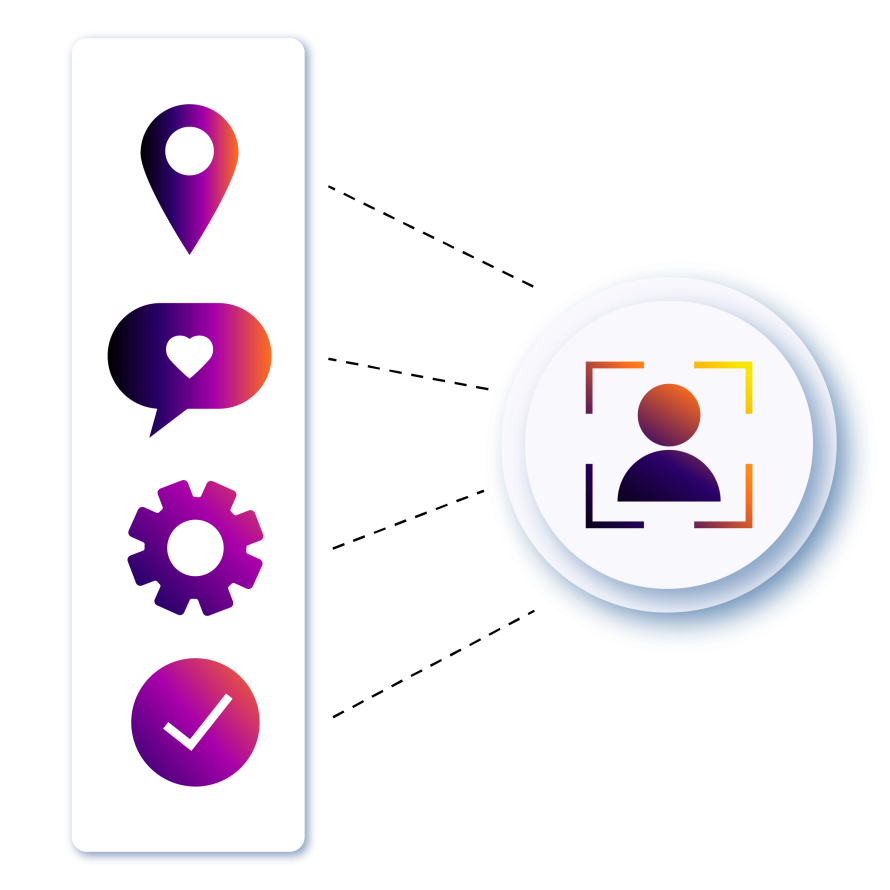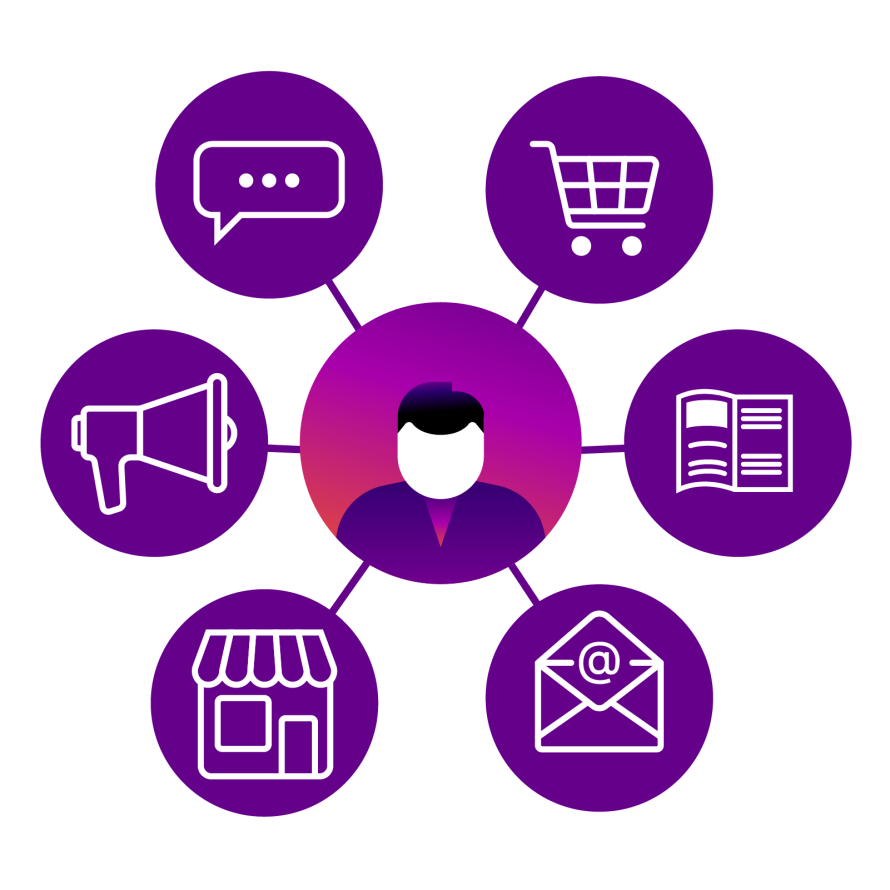Personalization at Scale: Advanced Techniques for Data Integration
Personalization is no longer a “nice-to-have” — it's a customer expectation. Over 80% are willing to share their data for more relevant, tailored interactions.
But scaling personalization is tough. Many organizations struggle with scattered data, outdated systems and overwhelming volumes of information. Yet, as demand for personalized experiences rises, finding better ways to handle data is a must.
We’re going to take a look at techniques for integrating diverse data sources – following privacy and compliance rules, of course – to help your business deliver meaningful experiences to millions of customers worldwide!
Overcoming Data Silos for Effective Personalization at Scale
Image

Data silos are like roadblocks to personalization. When customer information is scattered across departments and systems, it’s nearly impossible to deliver cohesive, relevant experiences. Common causes include departmental separation, incompatible systems and lack of cross-functional tem communication.
Without a unified view, personalization efforts suffer as organizations struggle to piece together the customer journey.
There are several ways to overcome these barriers, each offering a unique approach to unifying customer data. One solution is using a customer data platform (CDP). CDPs bring together data from every touchpoint, making real-time personalization and predictive insights possible. With a CDP, businesses can gain deeper insights into customer behavior, enhancing their ability to deliver personalized experiences.
Businesses should look for a CDP that offers scalability, integration with existing systems and strong vendor support.
- Establish clear policies to ensure data quality, privacy and compliance with regulations like GDPR.
- Ensure smooth integration between the CDP and other tools, such as CRM and marketing automation platforms.
- Track key metrics such as data accuracy, customer engagement and return on ROI to assess the CDP's effectiveness.
Another effective approach is leveraging cloud-based ETL (extract, transform and load) tools. With tools like Talend and Informatica, bringing together data from various sources becomes easier, helping teams share information and collaborate more efficiently across departments. These tools simplify the process of delivering consistent, personalized experiences by ensuring data is accessible and usable at scale.
Both strategies – whether through CDPs or ETL tools – offer a path toward breaking down data silos and enabling more cohesive personalization efforts.
Techniques and Best Practices for Integrating Diverse Data Sources
Integrating diverse data sources is important for gaining a complete understanding of your customers, allowing for more personalized and relevant experiences. Combining data from multiple sources – such as CRM systems, social media and web analytics – enables a 360-degree view of customer behavior. Some techniques for data integration include:
- Data consolidation: Centralize your customer data in one place to unlock seamless access and quicker analysis across your entire organization.
- Data normalization: Standardizing data formats across systems for consistency and compatibility.
- Identity resolution: Stitching together identifiers like email addresses and social media profiles to form a single, unified customer profile. It's essential to approach this process transparently, ensuring ethical customer data handling and compliance with privacy laws such as GDPR and CCPA.
- Data cleansing: Removing duplicates and correcting errors to improve data accuracy and reliability.
Here’s how to make data integration smoother:
- Focus on a key performance indicator that aligns with business goals to guide integration efforts, such as average order value, conversion rates or retention rates.
- Gather only the most relevant data to avoid overwhelming your systems and ensure privacy compliance.
- Use scalable and secure storage solutions to manage large datasets effectively.
- Implement consistent data collection, cleansing and diagnostics to enhance data reliability and accuracy.
And last but not least, you need to create a culture of cross-departmental collaboration. Encourage your teams to share data and educate all employees on the benefits of integration to further break down silos, enabling more effective personalization strategies!
Driving Scalable Personalization with AI
When businesses centralize their data, they can use AI to unlock more advanced analytics and actionable insights. AI enables companies to predict customer needs and preferences with greater accuracy based on past interactions, making personalization more relevant and impactful.
Above all, AI-driven personalization brings businesses:
- Enhanced customer satisfaction: AI tailors recommendations and experiences, fostering loyalty by delivering what customers want when they need it.
- Efficiency gains: Automating personalization processes through AI reduces manual labor and operational costs, allowing businesses to scale their efforts without increasing resources.
- Deeper insights: Advanced analytics can identify hidden patterns and trends, empowering businesses to fine-tune their personalization strategies for maximum impact.
With so many AI models out there, it can be tricky to know exactly how to use them to your advantage. Here are some techniques for using AI:
- AI can predict customer actions, enabling businesses to adjust offers, content and messaging in real-time. For example many streaming services use AI to recommend content based on viewing habits, helping retain customers and driving engagement.
- Combining AI with CDPs creates comprehensive customer profiles, allowing real-time, personalized interactions. Enterprises can use a CDP to integrate app data, purchases and loyalty program information, offering personalized promotions that boost loyalty and average order values. With every interaction, AI-driven systems get smarter, refining your personalization efforts and delivering more accurate, relevant experiences in real time.
- NLP can analyze unstructured data like customer reviews or social media comments to gauge sentiments and preferences.
Scaling personalization isn’t easy. Scattered data, legacy systems that don’t play nicely together, and the sheer volume of information can overwhelm even the most advanced teams. To address these, companies need to invest in scalable data infrastructure and data governance practices to ensure accurate, compliant data.
Ensuring Privacy and Compliance in Large-Scale Personalization
Privacy and compliance are critical considerations when implementing personalization at scale. Regulations like GDPR and CCPA have raised the stakes for how businesses handle customer data, imposing strict guidelines on data collection, usage and storage. Failure to comply with these regulations can result in severe consequences, including hefty fines, legal penalties and a loss of customer trust.
To avoid these risks, businesses must prioritize privacy and compliance in their personalization strategies. Here are some tips for effective adherence:
Tip 1: Inventorying and managing personal data
It's essential to track how personal data flows through your organization, from collection to storage and usage. Sensitive data, such as Social Security numbers or financial details, requires extra attention. Tools like CDPs help businesses manage and monitor personal data efficiently, ensuring that customer information is handled correctly across all channels.
Tip 2: Implementing transparent data practices
Transparency helps maintain customer trust. Clearly communicate your privacy policies and obtain explicit consent for data collection and personalization efforts. For example, The Guardian created this short, engaging video to explain its data usage, making privacy policies more accessible and understandable!
Tip 3: Using advanced technologies for compliance
AI and machine learning can automate compliance efforts by continuously monitoring data handling practices. Techniques like encryption and anonymization further protect personal data, ensuring it’s secure. Advanced analytics tools can also track data usage in real-time, verifying that your personalization efforts comply with legal requirements.
Tip 4: Ensuring continuous compliance and adaptability
Regulations are constantly evolving, so make sure you do regular audits, assessments and updates to your personalization strategies. Proactively adapting to changes in the regulatory landscape helps maintain customer trust and avoid legal complications.
The Power of Omnichannel Marketing
Image

Omnichannel marketing prioritizes great customer experience across every touchpoint – whether online, in-store or via mobile. Unlike multichannel marketing, which operates on different channels without integration, omnichannel marketing focuses on delivering consistent and unified experiences, no matter how customers interact with your brand. A unified customer view lets businesses anticipate needs, delivering tailored content that fosters deeper connections.
Advanced Personalization Techniques
AI and machine learning play a major role in omnichannel strategies, analyzing customer behaviors to deliver personalized experiences. AI-powered chatbots, for instance, offer real-time support and tailored recommendations across channels, enhancing customer satisfaction. CDPs also help unify data from different sources, allowing businesses to build comprehensive customer profiles and deliver consistent, accurate personalization.
Pantheon and Lytics: The Perfect Partnership
Pantheon is a WebOps platform designed to streamline workflows and governance for teams managing WordPress and Drupal sites. It enables organizations to effortlessly build and manage high-performing websites that deliver outstanding user experiences at scale.
Lytics, a leading CDP, helps businesses unify, integrate and analyze customer data from various sources. By building comprehensive customer profiles, Lytics empowers companies to offer highly relevant and engaging personalized experiences.
Pantheon and Lytics have teamed up to take digital personalization to the next level. With Pantheon’s powerful infrastructure and Lytics’ cutting-edge data solutions, you can deliver seamless, personalized experiences at scale — without the usual headaches or high costs.
Pantheon’s scalable hosting and Lytics’ data unification work together to create a smooth, real-time flow of personalized experiences. This partnership is especially beneficial for enterprises with large customer bases, allowing them to deliver even the most complex personalized experiences without a hitch.
Together, Pantheon and Lytics unlock cutting-edge personalization techniques, including:
- Geolocation-based content delivery: Automatically tailoring content based on a user's location.
- Behavioral targeting and recommendations: Offering dynamic, tailored experiences driven by user behavior.
- Real-time data analysis: Enabling immediate content updates without sacrificing site performance.
Pantheon’s Edge Integrations and caching solutions means these techniques are executed efficiently, maintaining high-speed performance even with heavy personalization. Both Pantheon and Lytics are committed to privacy, offering tools to manage customer data responsibly and comply with regulations like GDPR and CCPA. Their approach ensures transparent, respectful data handling, protecting both businesses and their customers.
Taking Your Personalization to the Next Level with Pantheon
Personalization is great for boosting customer engagement, satisfaction and revenue – in fact, according to research, companies that focus on customer-led experiences grew 1.7x faster than those that don’t. However, large organizations often face challenges like data silos, integration issues and resource constraints when scaling these efforts. Pantheon’s platform simplifies data management and technology integration, helping businesses overcome these hurdles. With Pantheon’s scalability, your site will maintain high performance, even during peak traffic, ensuring a smooth user experience.
Pantheon’s integration with Lytics further enhances personalization by using advanced analytics and AI for real-time, tailored experiences!
Want to master personalization? Check out this webinar and discover how it can transform your strategy.